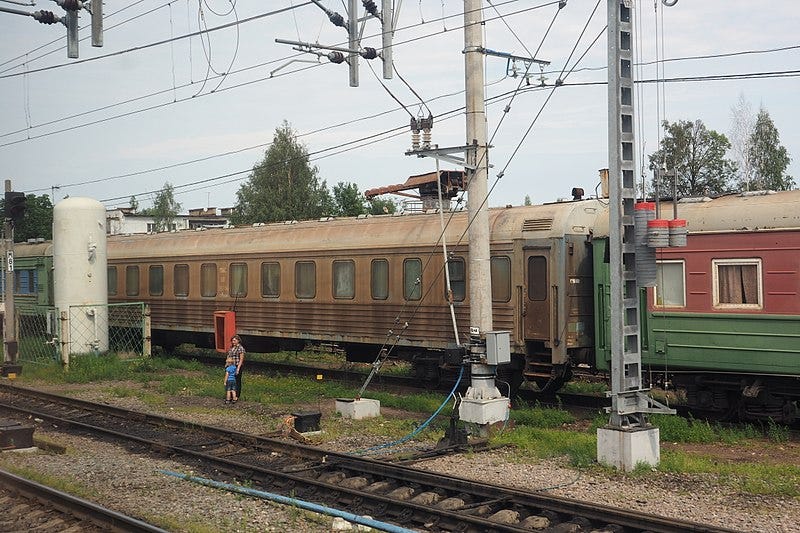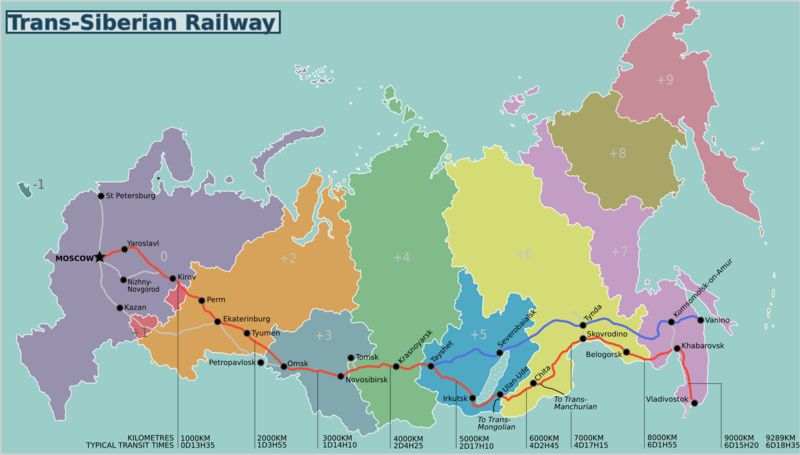Ufa Train Disaster 1989
The USSR’s Worst Peacetime Train Accident Is Almost Unknown In The West

This is a photo of a Soviet train similar to those involved in the accident. Original photos are available here. Or watch this on YouTube. (Most have copyright issues.)
A Forgotten Tragedy
We were looking in a different direction that day.
Most people have heard of the massive pro-democracy protest in Beijing’s Tiananmen Square, and the man with carrier bags confronting the tanks of the Chinese People’s Liberation Army on 4 June 1989. It’s an iconic image from the 1980s.
But even many reporters have forgotten that, on the same day, 4.000 kilometers (2,400 miles) away, people in the Soviet Union was facing the aftermath of their worst ever peacetime railway accident, involving two trains and a faulty gas pipeline.
The Soviet Union was secretive about its negative events, not wanting to look inferior to the west. Their media was heavily censored, playing down bad news and concentrating on trying to appear positive. Not everything has a positive side.
Between them, the trains had over 1,300 passengers. Officially, 575 people died and over 800 were injured. Some estimates are far higher. Exact numbers were impossible to find as children under five did not require tickets and we don’t know how thoroughly embarkations were supervised, or how many of those listed as “injured” later died.
Bad organization is often a factor leading to disaster
The Soviet Union was disintegrating. As its political, economic and social collapse developed, many safety issues were ignored, and some went horribly wrong. This happened just over three years after the major nuclear accident at Chernobyl (April 1986).
The Kubyshev Railway is part of the Trans-Siberian railway. Both trains were carrying holidaymakers, including large numbers of children. Train #211 was coming from Novosibirsk to the popular Black Sea resort of Adler; train #212 was bringing families back from their holidays in Adler to Novosibirsk (or anywhere on its route).
They coincided at the 1.710th kilometer, near Asha Station, Iglinsky District of the Bashkir Autonomous Soviet Socialist Republic, at around 1.15am on 4 June 1989.
These trains only passed at this particular spot on the line because train #211 from Novosibirsk was late.

The gas pipeline
This pipeline was constructed by Nefleprovodmontazh, It was originally designed to carry oil and was 750mm in diameter, but was later converted to be used for liquid gas.
Products such as liquefied gas could not be legally transported in a pipe more than 400mm in diameter, but this was either not noticed or ignored.
At the point where the accident happened, the pipeline was only 900 meters (3,000 feet) from the railway line.
In 1985, an excavator was working, building a road in Iglinsky district, and hit the pipeline. This left a crack 1.7 meters (5.6 feet) long. which was mended, but the repair proved later to be inadequate.
In 1989, gas had been escaping through this repaired crack for some time. Weather conditions allowed the cloud of gases (mainly butane and propane) to accumulate over a wide, low-lying, area.
Drivers of trains passing through the area previously had reported smelling gas pollution, but they were ignored.
As the two trains passed each other, sparks ignited this large, flammable but invisible, cloud. Estimates of the size of the explosion vary; the BBC, using a report from Sputnik news agency, estimated it as equivalent to “a force of up to 10 kilotons of TNT.” (For comparison, the Hiroshima nuclear bomb had a force equivalent to 16 kilotons.)
The pipeline was destroyed in this volumetric chemical explosion. Trees fell, and fire consumed over 250 hectares of land. Both trains immediately caught fire. The blast broke windows in Asha, in Chelyabinsk Oblast, some 11 kilometers (6.8 miles) away. Passengers who died instantly were probably the luckiest.
After the explosion
People from Asha and other local areas came to help immediately, including teenagers coming home from a disco and staff from Krasny Voshkod Collective Farm. Later, evacuation was by Soviet military, medical teams, Aeroflot, and anyone with a helicopter or truck available.
The process took over 17 hours, with over 800 people taken to hospitals, including a modern new burns center in Ufa. There were fractures, traumatic amputations, and other injuries. Even doctors were horrified at the extent of the damage.
Few survived among those with severe thermal burns and brain injuries. Unidentified remains were stored in refrigerated trucks.
When people in other countries heard about this, help was made available; a burns team from San Antonio, Texas, assisted in the care of some of the most severely injured, and the United Kingdom sent a 16-person team to Chelyabinsk to help children affected in various ways.
Longer-term effects included hepatitis, cardiomyopathy and severe emotional disorders. Some survivors never completely recovered.
Legal aspects
On the afternoon of 4 June 1989, Mikhail Gorbachev, then Chairman of the Supreme Soviet, initiated a Commission of Investigations, led by Gennady Vedernikov.
There were initially rumors of sabotage, but these were debunked. The Commission concluded this was an accident, but that incompetence and poor working practices were significant causal factors.
Any list of relevant causes includes: hurried work culture; “cutting corners” and lack of safe working practices; removing authority of despatchers to stop trains when necessary; altering the pipeline’s use and ignoring changes in gas pressure.
Nine officials were indicted, mostly from Nefleprovodmontazh, which constructed and installed the faulty pipeline. The trial took six years. the Supreme Court of Bashkiria sentenced seven defendants to 2 years each in a “colony-settlement.”
Deputy Minister of the Oil Industry Dongaryan was convicted for cancelling telemetry (the process of taking data in situ and sending it to those monitoring to keep track of important changes).
New laws were passed relating to the proximity of pipelines to roads and railways.
In 1992, a memorial was built on the site of the accident.
Sources:
https://hiddenshell.ru/en/krupneishaya-zheleznodorozhnaya-katastrofa-v-istorii-sssr-krupneishaya/
